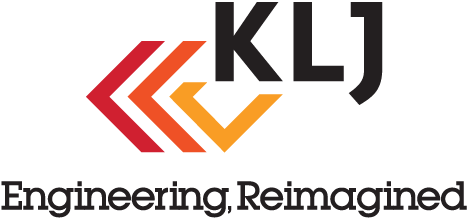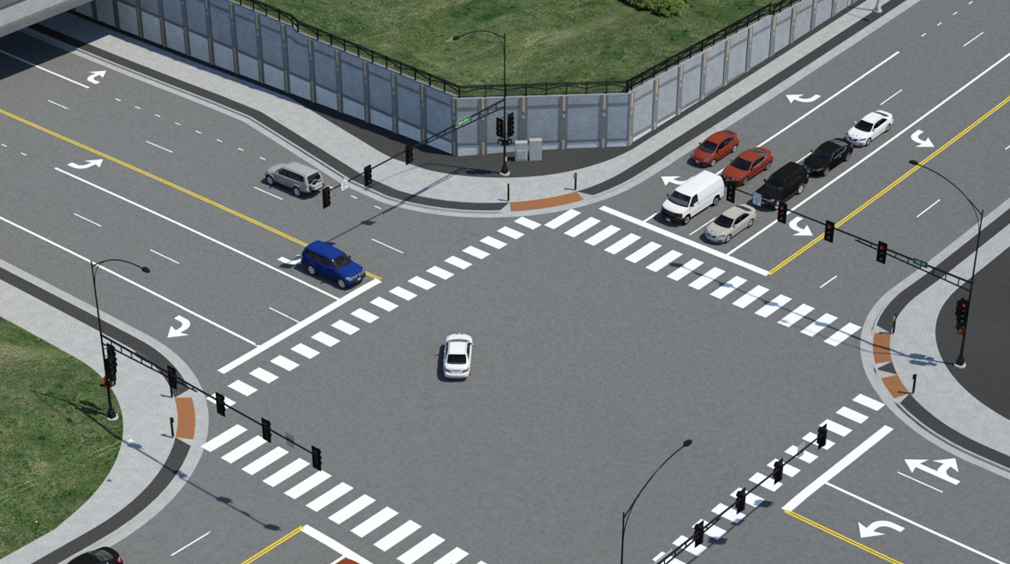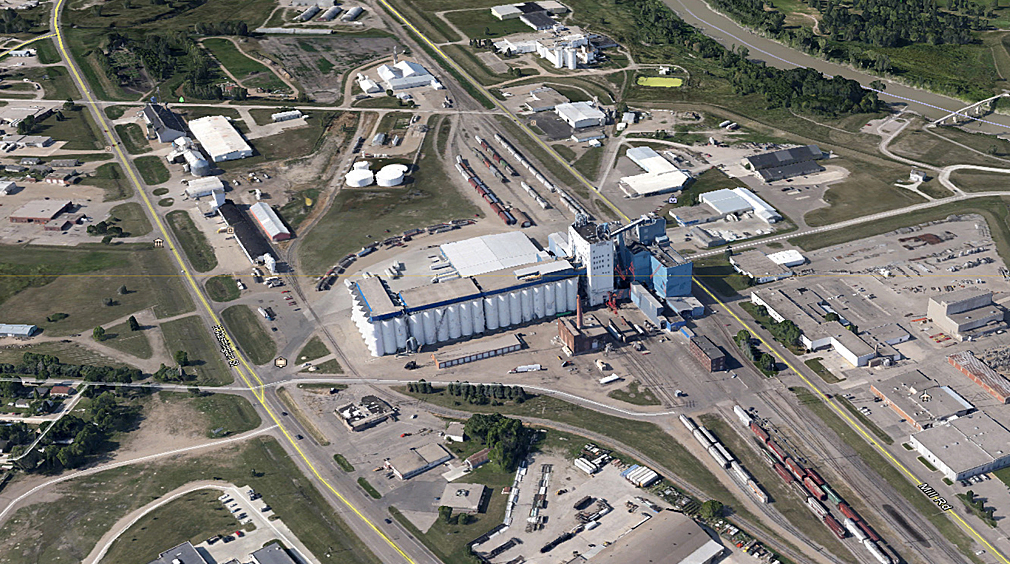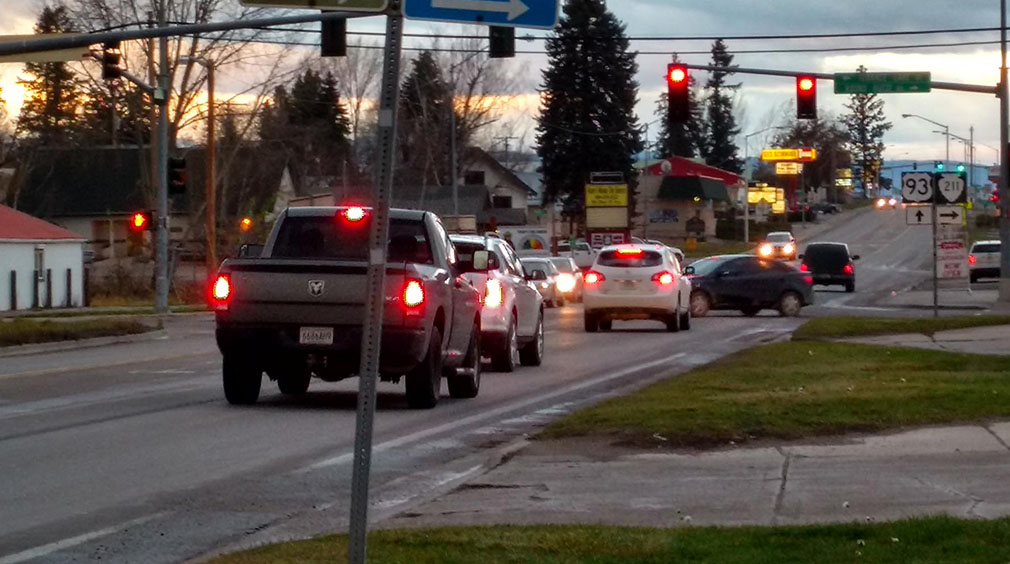PROJECT
Kalispell, Montana is a city of 24,500 people located just 45 minutes from Glacier National Park. It is the regional hub and seat of Flathead County—a county geographically larger than the state of Connecticut with approximately 3 million annual non-resident visitors. For over 100 years, the railroad drove Kalispell’s growth. Over that time, transportation and industry evolved, leaving only two rail-served businesses in Kalispell. Businesses that once faced the tracks turned towards the streets. Railroad crossings inhibited traffic flow, causing long idle times. The fire station and ambulance service were on one side of the tracks, and the hospital was on the other. Tracks restricted development, leaving at least 44 acres of land undeveloped or underdeveloped, forcing urban sprawl rather than attracting infill.
In 2010, Kalispell received a Brownfields Area-Wide Planning pilot grant and launched a project to revitalize the Core Area, the City's traditionally industrial-focused hub with a rail corridor stretching across its center. Dubbed the "Core Area Plan", the initiative was unique in its public outreach. The Core Area includes 1,100 parcels of land held by 450 property owners. City staff held one-on-one meetings with one-third of the property owners whose holdings represented 60% of the land in the Core Area. Additionally, public meetings, open house events, and special presentations to community groups were held, and newsletters were produced throughout the process engaging the community at unprecedented levels.
One particularly innovative aspect of the outreach included a five-day workshop soliciting community/business owner feedback, and culminating in “Speeder Car” rides for participating public (video here), offering a unique experience and perspective of the proposed trail, which was followed by surveys.
The Core Area Plan integrated community ideas and priorities, developed a vision, identified infrastructure needs and development limitations due in part to the brownfield sites, and then created specific strategies for revitalization. The City capitalized on the brownfields assessment and revolving loan fund grants paired with Targeted Brownfields Assessments (TBA) to carry out the community vision. In 2015, Kalispell was awarded a US Department of Transportation TIGER grant, further bolstering the effort to transform the City for the next 100 years.
SOLUTION
Phase 1 of the project created a new rail-served industrial park allowing the final two rail-served companies to relocate from the center of town. Land and regulatory constraints had limited both companies in their former locations, yet the new rail park offered opportunity to expand and modernize facilities. A third company is expanding their production capacity while capitalizing on rail facilities to lower shipping costs for production materials and final products. It is anticipated that they will provide “team track” to users outside the rail park, greatly expanding the park’s economic impact.
Phase 2 of the project removed 1.6 miles of track from Kalispell, replacing it with a multi-use path and linear park (Kalispell Parkline), and a complete street to improve north-south connectivity. The Parkline Trail connects to 11 miles of existing “Rails to Trails” westward and seven miles to the south. To the east, the Parkline Trail will connect to another trail system, which will eventually connect to Glacier National Park. The Parkline Trail in Kalispell will provide safe and reliable access to housing, amenities, job opportunities, and recreation.
The brownfield sites related to the project ranged from an open-pit gravel mine partly encompassed in an active state Superfund site, a 1.6-mile railroad line running through the center of town, a grain elevator site, a fertilizer plant, and three fuel pumping stations at two locations. Eleven phase I and seven phase II environmental site assessments (ESA) were conducted from 2011 through 2020 at these five properties directly involved in the Core Area project to identify needs for additional investigations and to establish prospective purchaser protections in advance of property sales. These 18 ESAs were conducted primarily with City of Kalispell Brownfields Assessment grant funds and augmented by EPA Region 8’s Targeted Brownfields Assessment program to fill funding gaps as needed. To date, the Montana Department of Environmental Quality (DEQ) has issued one No Further Action letter and one Site Closure. An additional three-phase I’s were completed with another pending on adjacent properties ready for development as a result of the Core Area project.
The five brownfield sites redeveloped under purview of Montana DEQ include:
- Former Gravel Pit redeveloped to industrial rail park: one phase I and two-phase II ESAs; engineering and institutional controls, soils excavations, and in situ-bioremediation (at State Superfund area); ongoing monitoring were all employed at this site.
- Former CHS Grain Elevator: two-phase I and two-phase II ESAs; engineering controls, excavation of petroleum contaminated soils, removal of asbestos and LBP building materials, natural attenuation, and ongoing monitoring. No Further Action determination.
- Former CHS Convenience Store/Feed Store/Gas Station: two-phase I and one phase II ESA, engineering controls, and two underground storage tanks (UST), and soils removed. Releases closed.
- Former CHS Agronomy Center/Gas Station: two-phase I and two-phase II ESA’s, engineering and institutional controls, excavation of petroleum contaminated soils three UST’s removed, removal of asbestos-containing building materials, natural attenuation, on-going monitoring, and soil-vapor mitigation strategies required for construction.
- Former BNSF Railway: three-phase I and one phase II ESA; no clean-up needed.
As a group, these varied sites dispersed across the city were quintessential brownfields: the sites were or were perceived to be, contaminated and the stigma long kept them underutilized and hindered redevelopment to higher and better uses. The application of resources to these sites yielded positive results in every case for the properties/owners and, in the larger scope, for the community as a whole, creating synergy to catalyze redevelopment of 60 acres.
KLJ provided environmental documentation related to decommissioning of key sites. We also provided stormwater, lighting, and electrical design. We assisted in securing project funding and provided support for public engagement initiatives including newsletters, presentations to local organizations, development of online content, and exhibits at local events.
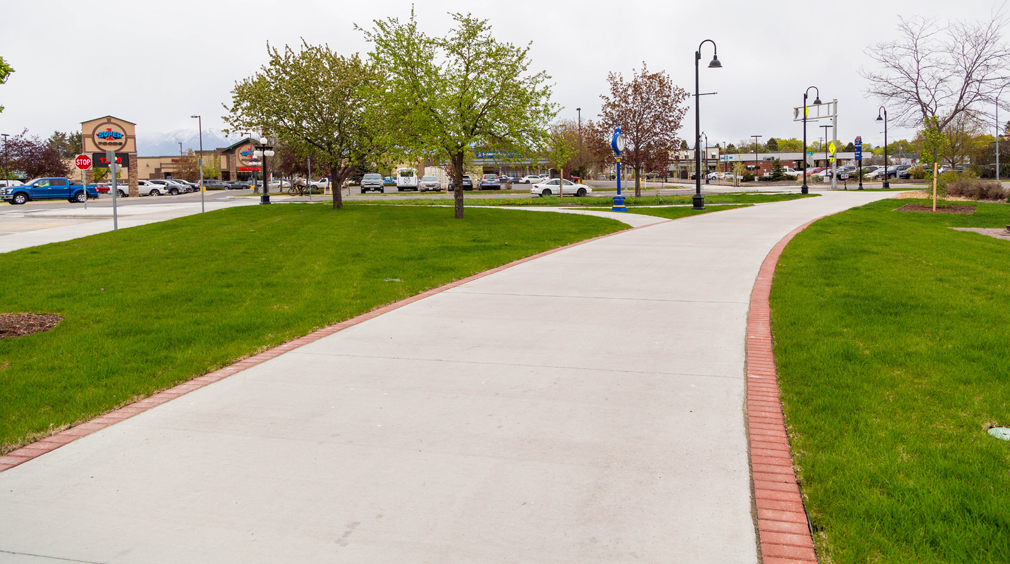
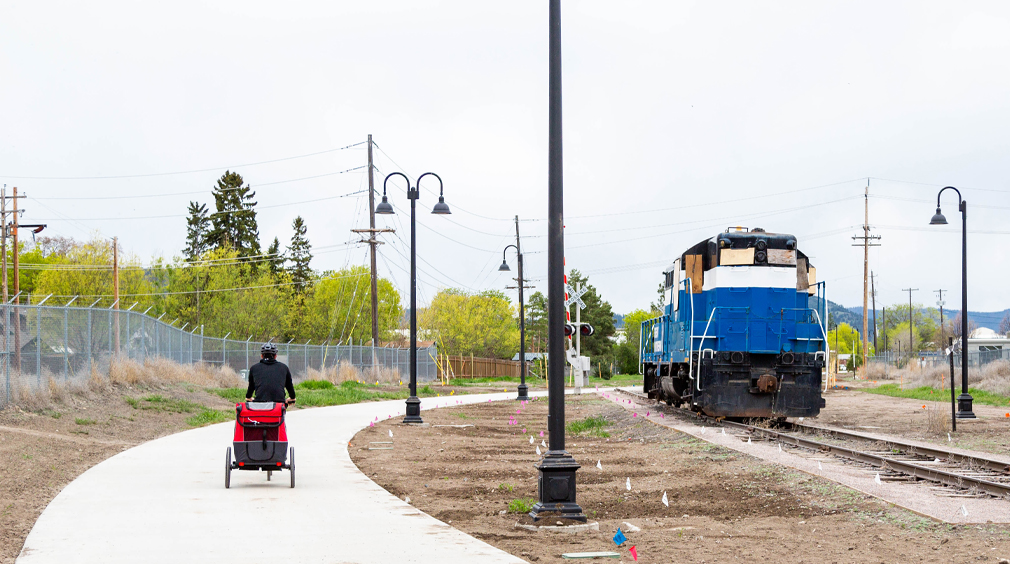
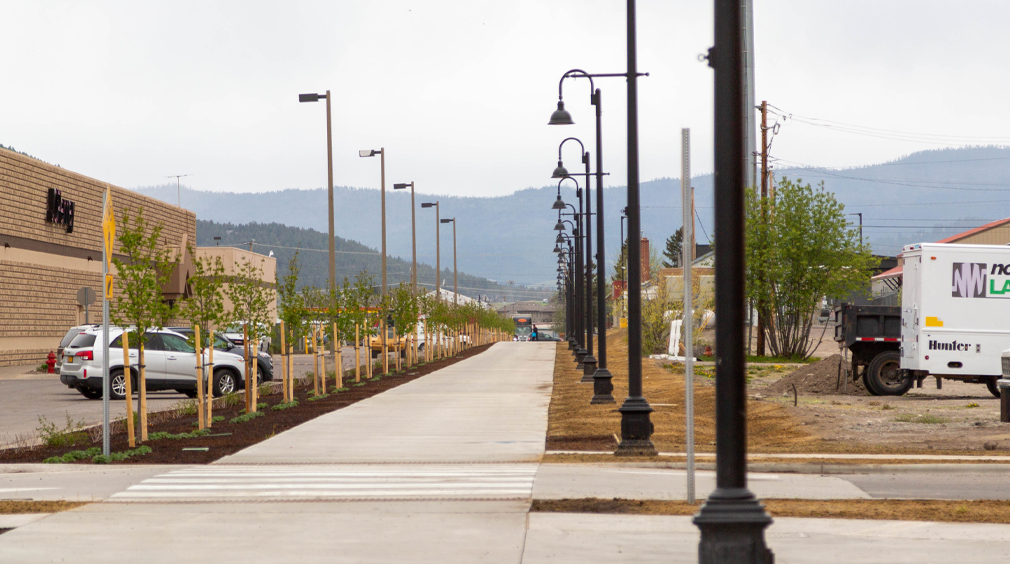
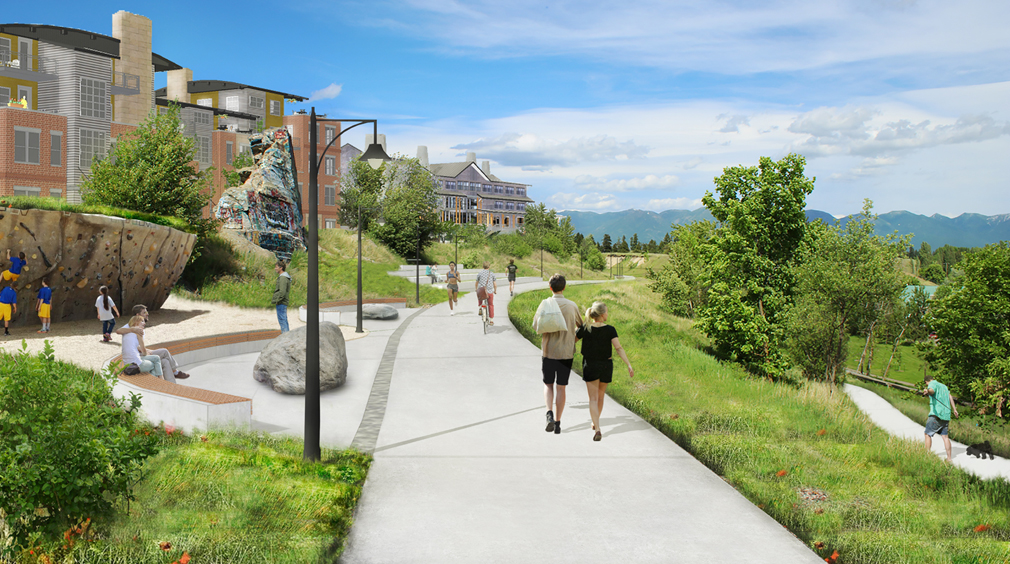
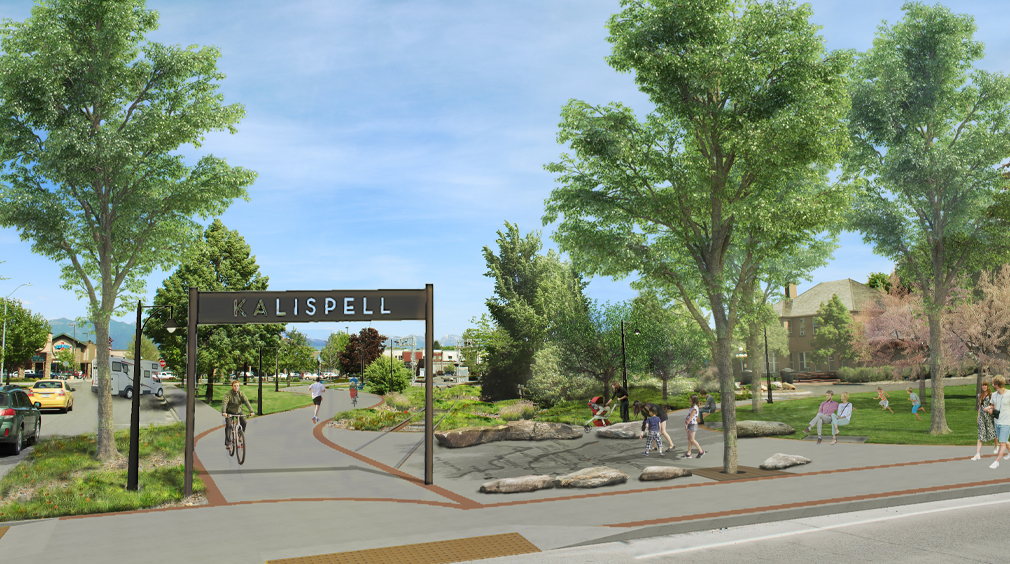
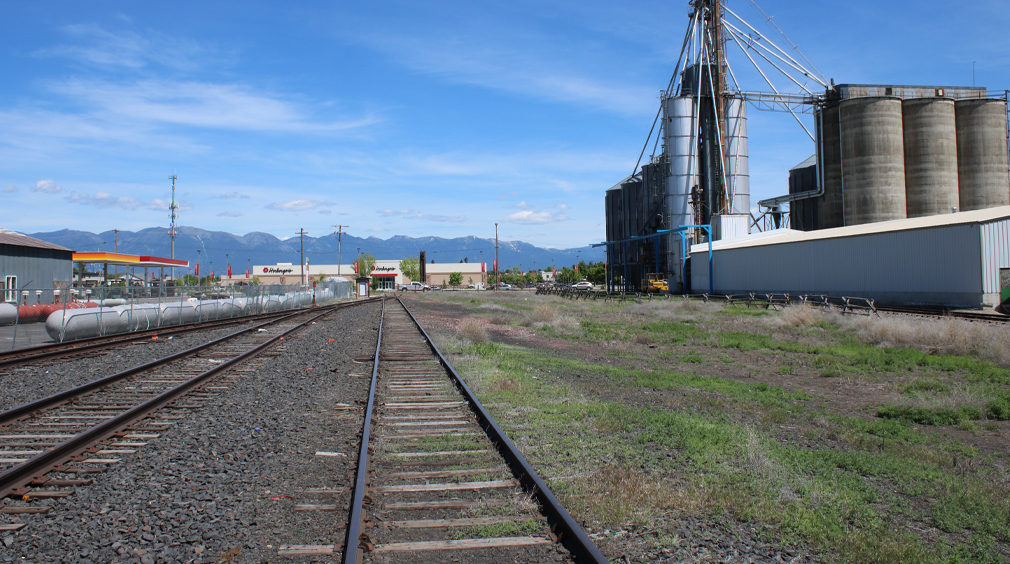
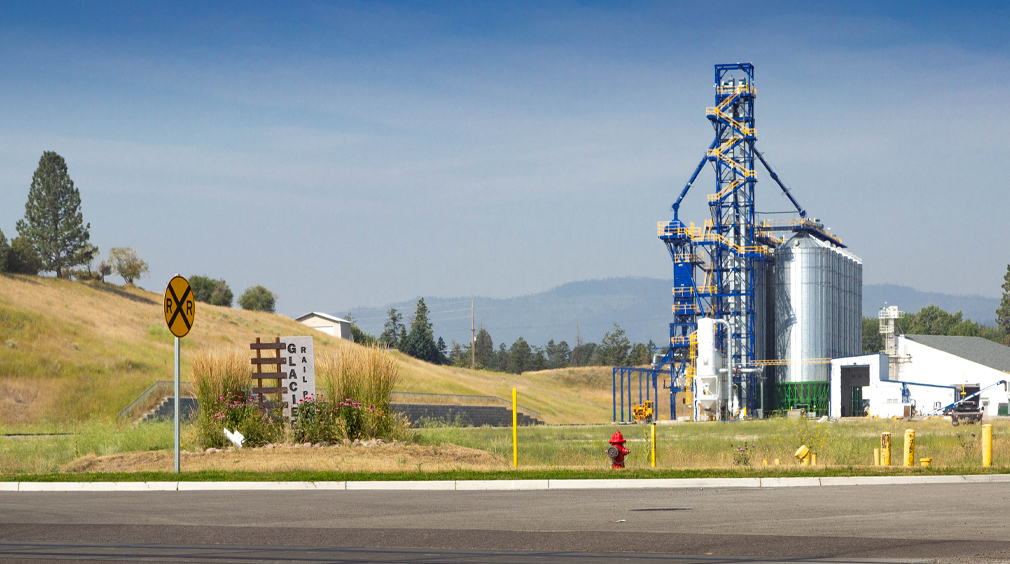
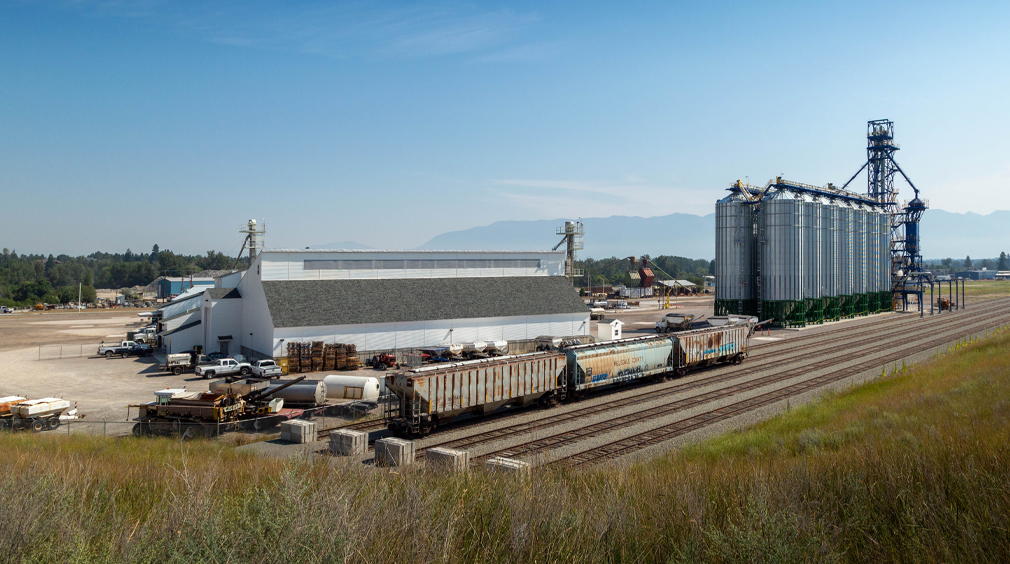
RESULTS
Contaminants mitigated as part of the project include:
- Petroleum & Hydrocarbons
- Polychlorinated Biphenyls (PCB)
- Asbestos
- Lead-Based Paint
- Arsenic
Media impacted as part of the project include:
- Soil
- Groundwater
- Structures/ Materials
One of the Core & Rail Redevelopment’s primary goals was to create an urban center in the Core Area capable of spurring development of high-density housing geared toward a variety of lifestyles and ages, complemented by a vibrant new mix of retail, restaurant, and entertainment options. The once-blighted rail corridor is fast becoming a vibrant asset, driving the revitalization of Kalispell.
Even before phase 2 began, developers began purchasing and redeveloping adjacent properties in anticipation of the new trail. Since construction started, additional adjacent properties have sold, and plans for mixed-use developments including commercial, retail, and residential developments are underway. Fueled by the Core & Rail Redevelopment project, Downtown Kalispell’s Core Area is the perfect place for the community to flourish.
In addition, while removing historic rail from the center of Kalispell, the project has reignited the growth of a new industrial and commercial rail hub in Flathead County for the first time in 100 years. The Glacier Rail Park offers unique rail access options for rail-served businesses in Northwest Montana. Equally important, it will provide team track and transload service options, services never before available in the Flathead that greatly expand access to worldwide markets. New, safe access to rail is promoting local business expansion and putting the Flathead in a better position to attract new rail-served manufacturers to the area.
This project was awarded a 2022 Engineering Excellence Award from the Montana Chapter of the American Council of Engineering Companies (ACEC/MT), as well as a National ACEC Honor Award. The national competition recognizes engineering firms for projects that demonstrate an exceptional degree of innovation, complexity, achievement, and value. The awards rate each project on uniqueness and/or innovative application of new or existing techniques; future value to the engineering profession and perception by the public; social, economic, and sustainable development considerations; complexity; and successful fulfillment of client/owner’s needs, including schedule and budget.
